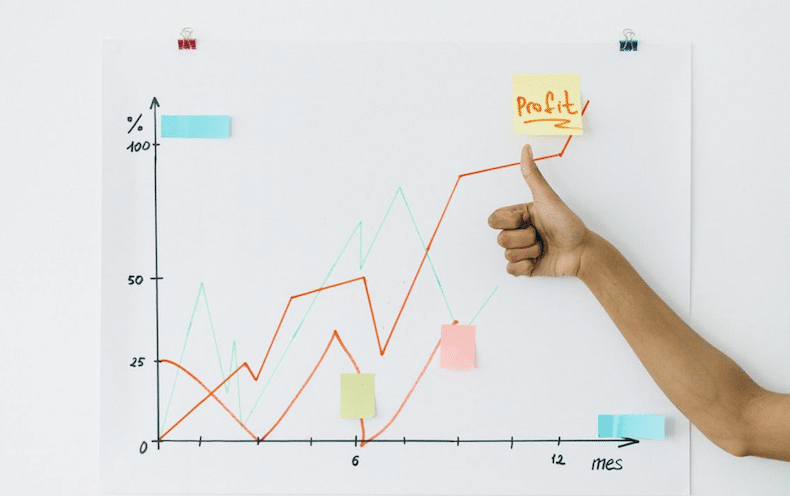Investing in the stock market allows traders to build their portfolios and income. However, there are certain risks associated with trading in stocks or other financial trades. That is why beginners use paper trading to learn and practice their skills for actual trading.
Paper trading may sound complicated, but it is simply a way to buy hypothetical stocks on paper without investing any real money in them. Paper trading is the first step to learn the stock market nitty-gritty if you are new to the world of stock investments and still trying to learn the basics of how it works.
It is very easy to indulge in paper trading, but it comes with certain advantages and disadvantages. Let us see how it works and how you can hone your skills without losing money.
What Is Paper Trading?
Stock trading usually involves buying or selling specific stocks according to the current price, hoping that their value will increase with time. If the value of the trades you purchased increases, you can sell them at the new price and earn profit from it. However, that means you will have to invest your money and accept the associated risk.
The value of the stocks you purchased can also decrease, which means you will have to endure a loss while selling them. Paper trading is an option that allows you to buy and sell imaginary stocks or other trades without investing any real money.
It is called paper trading because you write your hypothetical investments on paper or record them on a spreadsheet and observe how they perform over a specific period. You can also participate in paper trading through online simulators.
How Does Paper Trading Work?
Paper trading is a useful training tool that allows beginner traders to familiarise themselves with the stock market and price movements. Sometimes, experienced investors also use paper trading to test new concepts and see if they can implement them in actual trades.
To start paper trading, you need a pen and paper along with some ideas about the stocks you want to trade. For example, you may have observed stock XYZ for some time and analyzed the stock performance. You want to judge whether it will be a good idea to purchase those stocks for real.
So you can write down the price at which you would wish to buy a stock or an Exchange Traded Fund (ETF) and the price when you may want to sell it. Once you have noted the trades you are interested in, you can track your movements to see how much money you could have gained or lost if you had actually invested. It is a simple way to judge how accurate your predictions are about stock prices.
If you predict incorrectly, you are still safe from sustaining any financial losses. However, paper trading is not just about testing out your guesswork skills. It is a way to understand how professionals trade in stocks and make consistent profits.
You can also learn about market orders, stop-loss orders, stock charts, stock tracker tools, and other ways to monitor stocks. That way, you can base your decision intelligently and learn more about how to execute actual trades.
Advantages and Disadvantages of Paper Trading
Paper trading has its own set of pros and cons that you must weigh before beginning your sessions.
Advantages
- You can trade without the risk of losing any real money, which is ideal for beginners.
- If you are new to the world of trading stocks, it is natural to feel intimidated or overwhelmed by so many terms and concepts. Paper trading offers an opportunity to test the ropes before you start trading with real money.
- Beginners always face a lot of investment by vessels that can affect the decisions adversely. You can use the time spent on paper trading to learn how to avoid these biases when you trade in reality.
- Paper trading improves your confidence to perform well when you transition to the real world of stock investments.
Disadvantages
- When you spend too much time paper trading, it can mess up your risk tolerance level. If your paper trades have been successful consistently, it can induce a sense of false security and confidence leading you to take more risks than you should.
- You will not lose any money, but that means he will not make any profit either. Bear that in mind while paper trading, or you may feel disappointed when you see your predictions panning out.
Digital Paper Trading
As we mentioned before, you can indulge in paper trading using papers or a spreadsheet. However, it is much more popular to use a digital trading software or online platform that offers paper trading.
Digital platforms can simulate the experience of actually trading online, which can provide better learning opportunities. You can also find research and analytical tools on some of these virtual trading platforms to learn the nitty-gritty of stock trading. However, there are some things that you must bear in mind while using digital or virtual methods of paper trading.
- What of the types of virtual trades in which you can participate?
- Is the pricing data displayed in real-time, or is it delayed?
- Can you access it through a website or a mobile app?
- Do they offer any market research for analytical tools?
- Do you have to pay any fees to use the virtual trading platform?
Paper trading is an effective way for beginners to familiarise themselves with how the stock market works. But remember that paper trading is hypothetical, and the results could be different in the real trading world.










